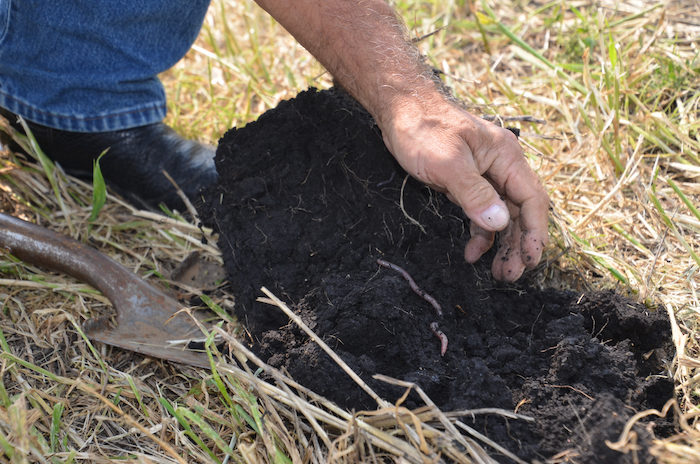By: James Hoorman
Since I am on the road teaching, here are some practical tips from my factsheet: “25 Tips to Growing and Managing Cover Crops”. Tip 1: Use cover crop mixtures composed of at least one grass, one legume, and one brassica or other diverse cover crop species to improve diversity. Mix summer annuals with fall and winter annuals to increase crop diversity.
Tip 2: Select diverse species that maximize both sunlight and moisture interception. At least 50 percent of cover crop species should be low growing, another 30 percent intermediate, and 20 percent tall growing. Select cover crops that have a variety of taproots and fibrous root systems that incept moisture from different soil regions. The goal is to utilize 100% of available sunlight and moisture to minimize direct competition for nutrients and water.
Tip 3: To determine initial seeding rate in cover crop mixtures, divide the full rate of seed needed for each cover crop in a monoculture and divide by the number of cover crop species planted. Small seeded cover crops should be planted shallow, large seeded cover crops deeper. Set the planter or drill for the largest seed in the mixture. For example, a simple cover crop mixture is oats, crimson clover and radish. The full rate for oats by itself is one bushel per acre (32 pounds) divided by 3 or 10-11 pounds in a three-way mix. Crimson clover is 15 pounds by itself or 5 pounds/A in a mixture and radish (daikon) is 3-5 pounds/A by itself or 1-2 pounds in a three-way mixture.
Tip 4: Add manure or fertilizer to cover crops to increase biomass production. Most fertilizer or manure applied will become available to the next crop after it is decomposed. Adding 50 pounds of nitrogen to most grass or brassica cover crops may double biomass production if manure is not available. Adding a legume to the cover crop mix reduces the need for additional nitrogen fertilizer because cover crops mixtures share nutrients between species. Tip 5: Most cover crops need a minimum of 1 inch of rain and at least 60 days of growth to survive the winter. Due to day length and soil temperature, planting or drilling even one week earlier is beneficial for establishing cover crops successfully.
Tip 6: Drilling is preferred to broadcasting seed to improve seed-to-soil contact and to improve germination. If you are broadcasting or flying on seed early, increase the seeding rate by 10 to 20 percent to compensate for reduced germination. Large seeded cover crops generally should
not be flown or broadcast unless soils are really wet. For corn production, broadcast seed when you can see 50% light penetration between the rows; for soybeans, when 25% of soybeans leaves are turning yellow. Drilling reduces seeding issues with voles (field mice), slugs, and worms.
Tip 7: Many early seeded cover crop failures are associated with herbicide carryover issues due to August dry weather (slow breakdown), especially when associated with triazines (Ex. Atrazine), ALS herbicides (Ex. Pursuit and Scepter) or herbicides with long half-lives. If you are dissatisfied with cover crop stands in the fall that were broadcast, chances are herbicide carryover may be an issue. Many legumes and brassica’s (radish, rape, kale) struggle with herbicide carryover.
Tip 8: Use legume cover crops like crimson and Balansa clover, winter peas, hairy vetch before corn next year to add 50-150 pounds of organic nitrogen or brassicas to aerate the soil before corn production. Minimize using high carbon to nitrogen ration cover crops that will need additional nitrogen to decompose. Remember, the corn is the last organism to utilize nitrogen, soil microbes and the soil organic matter will tie up most of the available nitrogen first, so the corn generally feeds last. Tip 9: Legumes maximize their nitrogen production (90% complete) at blooming. Terminate legume cover crops before they set seed and tie up nitrogen. Most nitrogen in the legume cover crop will become available to next crop in 4-8 weeks once they decompose.
Tip 10: Add 40-60 pounds of nitrogen in corn starter next year to stimulate corn growth before soil microbes begin reproduction. Most soil microbes double their population with every 10- degree Fahrenheit increase in soil temperature. As microbial populations increase with moisture and warmer soils, nutrient recycling increases, and more nutrients are available for crop production. Long-term nitrogen studies show that almost 50% of N for corn comes from existing soil organic matter. Improving soil health next year starts with a good cover crop planted this year!





Post a comment
Report Abusive Comment